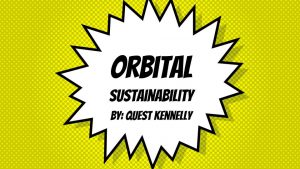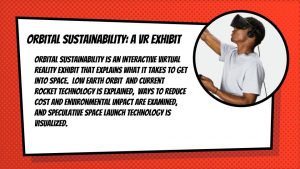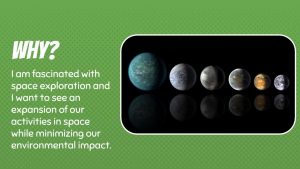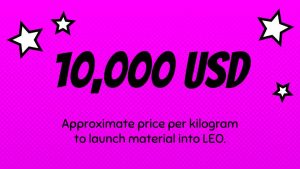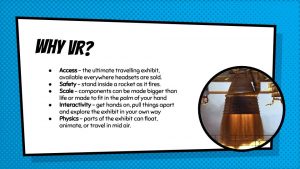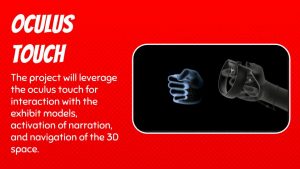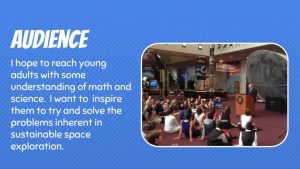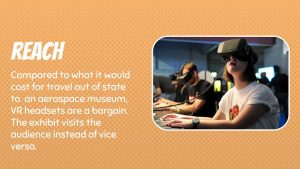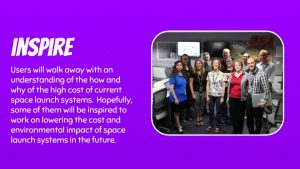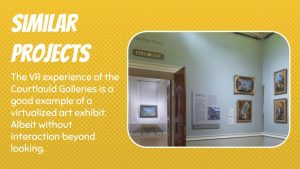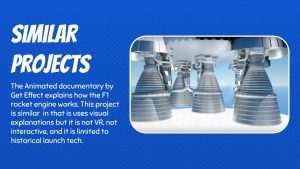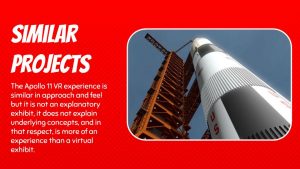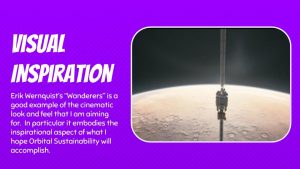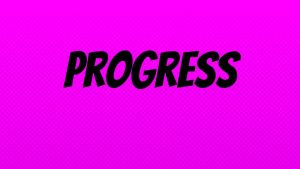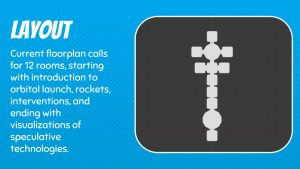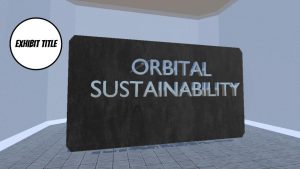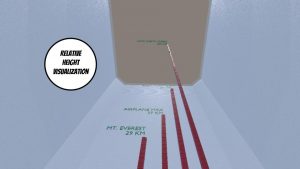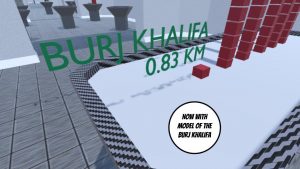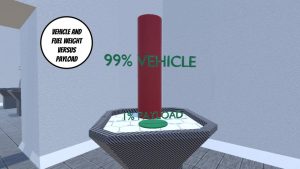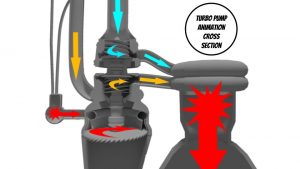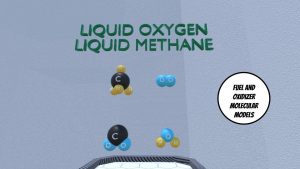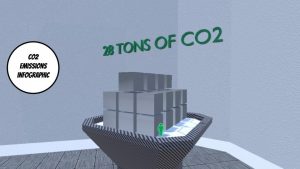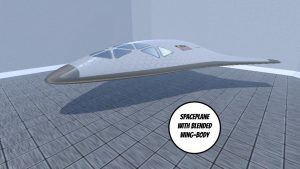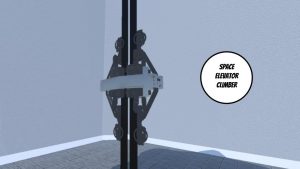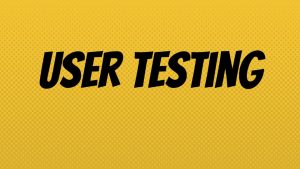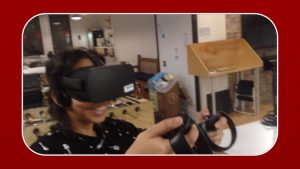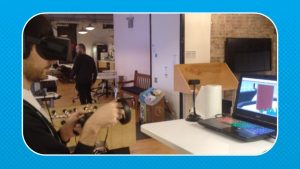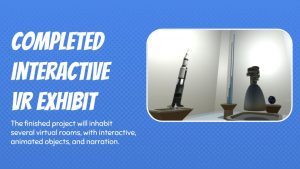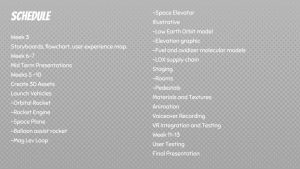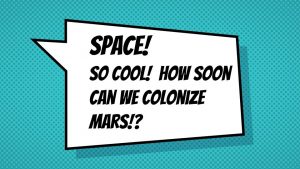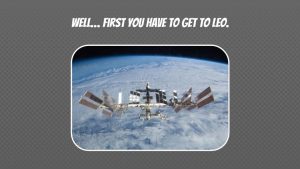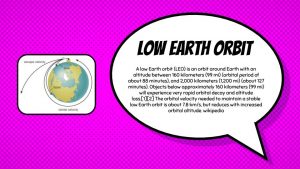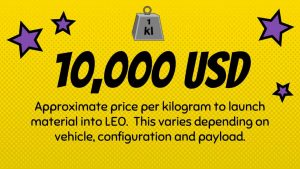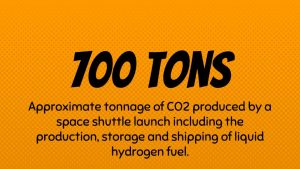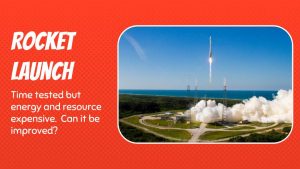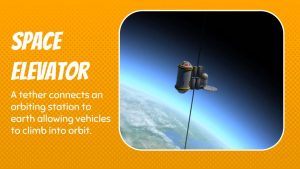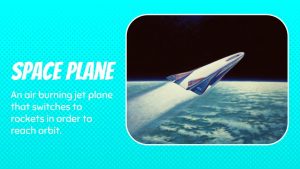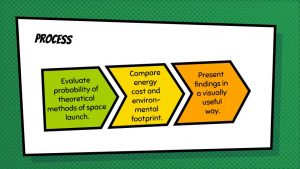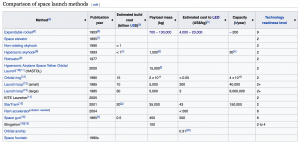Thesis Advisor: Kathleen Wilson
Thesis Project:
Orbital Sustainability
Orbital Sustainability is a virtual reality exhibit of current and speculative space launch systems that examines their respective cost and environmental impact. Leveraging the Oculus VR headset and Touch controllers empower users to explore the hurdles of space exploration in an interactive, informative, and entertaining way.
Space exploration generates new discoveries, novel adventures, and the challenge of technological innovation. Future space activities will require cheaper and greener systems for moving material into low earth orbit. The Orbital Sustainability project pursues two major goals. The first is to illustrate the economic and environmental challenges that current space launch systems must overcome. The second is to explore and compare potential solutions from the existent to the speculative. The subject matter of the exhibit is designed to appeal to anyone with a general interest in space exploration. The aim is to inspire a new generation of problem solvers to create new space launch technologies in the future.
Space exploration generates new discoveries, novel adventures, and the challenge of technological innovation. Future space activities will require cheaper and greener systems for moving material into low earth orbit. The Orbital Sustainability project pursues two major goals. The first is to illustrate the economic and environmental challenges that current space launch systems must overcome. The second is to explore and compare potential solutions from the existent to the speculative. The subject matter of the exhibit is designed to appeal to anyone with a general interest in space exploration. The aim is to inspire a new generation of problem solvers to create new space launch technologies in the future.
The Apollo 11 VR project by Immersive VR Education Ltd. has relevant elements, but rather than being locked into the POV of an astronaut, the user of Orbital Sustainability will be moving around a virtual exhibition space. Visual inspiration comes from the short film “Wanderers” by Erik Wernquist with its inspiring voice over, stunning visuals, and symphonic soundtrack. By comparison, Orbital Sustainability will be more interactive and deliver more concrete, factual information.
The Orbital Sustainability virtual museum space contains twelve exhibit rooms, each designed to explore a different topic, including orbit heights, rocket engines, fuel emissions, and reusability. Users enter the virtual museum by donning the Oculus Rift VR headset and equipping the Oculus Touch controllers. The controllers behave as virtual hands with button combinations for touching, grabbing, and pointing. Navigation of the exhibition space is accomplished by manipulating directional joysticks on the controller. With their head position tracked in real time, users are free to explore the exhibition space by simply looking around. Each component of the exhibit is accompanied by a green play button which may be triggered using the touch controller to initiate explanatory narration. Green hand icons signify parts of the exhibit that can be grabbed, trigger animations, or offer some form of interactivity with the touch controller.
Orbital Sustainability was developed using the Adobe software suite, Blender 3D, the Oculus Rift VR headset, the Oculus Touch controllers, and the Unity game engine. Initial design ideas were storyboarded, then roughed out in Blender. Once a layout of the exhibition space was complete it was populated with first draft exhibit components. The Blender scene was imported into Unity and interactivity was developed as 3D assets were simultaneously edited and refined. Photoshop and After Effects served to create custom textures including animated materials. Audio narration was scripted and recorded to explain the content. The interaction was user tested and debugged extensively using the Oculus VR headset and controllers.
Prototype efficacy was evaluated by closely observing user interaction with the exhibit, and by conducting a follow-up survey. Users were asked about their overall impressions of the exhibit, and how effectively each component conveyed the relevant information. User feedback led to enlarging exhibit components, removing pedestals, editing the length of audio narration, and many other smaller tweaks and adjustments. Overall, users spent more time with components that either reacted to their virtual hands or had some form of animation. Some users reported feeling dizzy while exploring the virtual museum. This issue was ameliorated by instructing users to navigate via joystick instead of changing their body position.
With more time and funds, Orbital Sustainability could be expanded to include other speculative systems and more detailed models. Also, for users who want to learn more, supplementary technical narration would be a valuable addition.
Midterm Presentation:
Presentation: Thesis Idea
CONCEPT DEVELOPMENT
Dream Review:
Gizmodo Article: A Mind-Blowing Comparison of Space Launch Technologies
NYU graduate student Quest Kennelly has produced an engaging thesis project that looks at current and speculative space launch technology with an eye for cost and sustainability. A combination 3D animations and infographics showcase the advantages, drawbacks, and likelihood of current and future space launch tech. Rocket launch has been the standard way to get to low earth orbit for the entire history of spaceflight. However, the cost per kilogram remains stubbornly close to $10,000 USD and the carbon footprint of rocket launches varies quite a bit depending on the fuel, configuration, and type of launch vehicle. SpaceX, Virgin Galactic, NASA, are all compared and contrasted. In addition, recommendations are made to reduce environmental impact on current tech along the production chain. Speculative approaches are likewise presented in stunning visualizations that include a space plane, space elevator, and a maglev launcher. The project provides a roadmap for a human future in space that is less restricted by cost and more environmentally responsible. Despite showcasing a wealth of technical information the visuals paint a picture that most audiences will find digestible if not at least entertaining. Gizmodo interviewed Quest Kennelly about his reasons for developing the project: “There are all these exciting things we want to in space, but whether it’s putting up a small satellite, or launching an interplanetary manned mission, we have to get over the hurdle of reaching low earth orbit. This project hopes to inspire new ideas and approaches that will get us over that hurdle in a better way with less cost. [see video]
THESIS STATEMENT
How do current and speculative space launch technologies compare with regards to cost and sustainability?
- I am exploring what technologies are currently available and which technologies are possible. Then compare them with regards to the likelihood of development as well as cost and environmental impact.
- The problem is that it is cost prohibitive, and CO2 heavy to launch material into low earth orbit currently. Both issues are roadblocks to meaningful space exploration and the development of space-based technologies.
- Areas of interest: Physics, engineering, multimedia, speculative design, sustainability, resource allocation, infographics, visualization, resource supply chains, technology bottlenecks, research.
–I have chosen this project because I am fascinated by space exploration. I hope to learn what technologies are worth investing in for the future of sustainable space exploration.
–Proof of concept: This project will look like a multimedia presentation/infographic possibly presented in VR that presents the research results. Users will interact with the project and learn which space launch technologies are worth pursuing in future.
RESEARCH SUMMARY
- What else is out there like your idea?
- –Wikipedia has an article that compares current launch systems and other discrete pages for speculative launch technologies. Universe today has done an article that compares heavy lifting launch systems only. Videos, some produced by NASA compare pairs of rocket launch systems, historical, current, and proposed. The short film “Wanderers” by Erik Wernquist, although not in any sense a comparison of launch technologies is a stylistic touchstone for what I want to accomplish.
- How is yours similar?
- –My project will cover some of the same material.
- How is yours different?
- –My project will cover more systems, explain the way each of them works and how they compare in per launch cost and CO2 emissions.
- How does yours improve on what exists?
- –It will present more information on a larger number of systems. I will present and do so in a more immersive and interactive format with better visual content.
- What audience is your project for? Be as specific as you can about your intended users.
- –Ideally, I would like the audience to be engineers, scientists, and inventors. I would like my project to inspire them to work on solving the dual problem of high cost and high CO2 emission.
- What is the world context/market/world your project lives in?
- The project would most likely live on the web, with video, and VR content available for download. Ideally, the piece could be used for instruction. If NASA screened it internally I would be ecstatic.
- Have you found something you didn’t expect? Is it an interesting path or tangent to follow? Why?
- –I have already found some unexpected information. Specifically, a secret program to launch payloads into space using nuclear explosions called Orion. It will be part of the presentation but its failure was due to potentially unsolvable problems related to nuclear radiation and fallout, so it would have a low likelihood of being revived for sustainable space flight.
- What do you need to know about the content/story that you don’t know already it?
- –I need to know what is currently being tried, what the resource supply chain is, and what the efficiency and environmental cost are for each program.
- Do you know where/how to find this content or develop this story?
- –A wealth of information is available from libraries and online resources but I am eager to speak with experts and professionals in the field.
- What do you need to know from a tech standpoint?
- –The fundamentals of current launch systems, and the ballpark numbers on speculative systems.
- Do you have the required tech skills to do this project? Do you realistically have time to learn new tech skills and accomplish your project in 14 weeks?
- –I think that for the level of detail I want to present I will be able to accomplish what I am aiming for.
- How long do you think your idea will take to implement? Are 14 weeks enough?
- –I think that as long as I get a good start I should be fine.
- If not, are there any essential elements of your concept or discrete parts you could accomplish as a proof-of-concept in the given time frame?
- –Even if I do not have all the information I intend to pursue I will still be able to make it look good visually.
Research Summary
My thesis exists in a world where space exploration has been held back by the high cost of launching material into orbit. Wikipedia compares current orbital launch systems but the graphical presentation of the information does not extend past that of a spreadsheet.
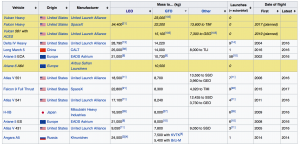
A simplistic spreadsheet on speculative launch technologies also exists.
Well executed visuals of speculative launch systems such as the space elevator in Erik Wernquist’s “Wanderers” are available but they exist independently of information I want to present.
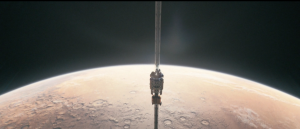
Universe today has done an article that compares heavy lifting launch systems and presents a simple illustration of the comparative scale of launch and orbital systems.
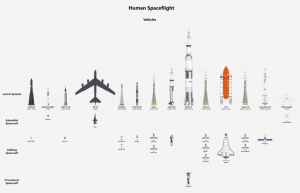
Furthermore, videos, some produced by NASA compare pairs of rocket launch systems, historical, current, and proposed.
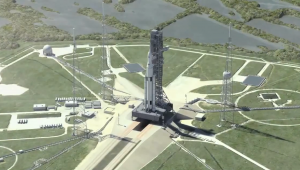
My proposed thesis project will first explain the underlying technologies and principles so that they can be understood by the general public. Speculative and existing launch systems will be presented and compared to each other in a visually engaging way. The cost, both in dollars per kilogram, and in environmental impact (tonnes of C02 per kilogram) to launch material into space will be presented for each technology. Taken all together the project will illuminate what technologies we should focus on in future and how to lessen cost and impact of existing systems. The breadth of this project will span the fields of engineering, physics, statistics, chemistry, environmental studies, geography, economics, digital multimedia, 3D simulation, 3D animation, and other disciplines.
Bibliography/Reference/Resources
NASA’s New Mega-Rocket for Deep Space Will Be Launch Ready by 2018
By Miriam Kramer, Space.com Staff Writer | August 28, 2014 07:19am ET
http://www.space.com/26964-nasa-mega-rocket-2018-sls-test-launch.html
RISE OF THE MEGA ROCKETS: COMPARING HEAVY LIFT LAUNCH SYSTEMS
by David Dickinson Article Updated: 23 Dec , 2015
http://www.universetoday.com/116943/rise-of-the-mega-rockets-comparing-heavy-lift-launch-systems/
Wanderers
by Erik Wernquist
Non-rocket spacelaunch
From Wikipedia, the free encyclopedia
https://en.wikipedia.org/wiki/Non-rocket_spacelaunch
StarTram: The New Race to Space
by James Powell, George Maise, Charles Pellegrino
October 23, 2013
Rocket Propulsion Elements 8th Edition
by George P. Sutton, Oscar Biblarz

